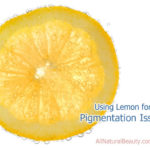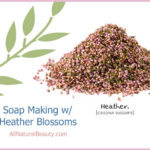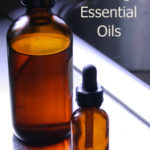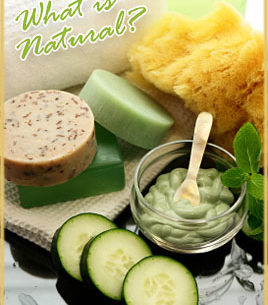
Organic products can be defined as agricultural products grown without pesticides, fertilizers, antibiotics, growth hormones, or genetic engineering. Organic products are usually grown sustainably too (meaning that the farmer has grown or raised her or his products in an eco-friendly manner that has less of an impact on the environment).
There are many organic standards, but the federal program is the United States Department of Agriculture’s National Organic Program (USDA’s NOP). The USDA’s NOP has a few different organic labels: “100% Organic”, “Organic”, and also “Made With Organic Ingredients”. For foods, every ingredient or product claiming to be organic must undergo organic certification. For foods, the word ‘organic’ is regulated in the U.S., meaning if a food product is not organic but uses the word ‘organic’ on their label, the company can get into trouble and be heavily fined.
An ingredient or product that is labeled ‘100% Organic’ means that every ingredient used in that product is certified organic. ‘Organic’ means that the product is at least 95% certified organic, and the other 5% are allowed synthetics or additives (usually the additives are benign but the laws have relaxed a bit in the last few years; these ‘allowed’ additives include ingredients like baking soda, which is not an agricultural product so cannot be considered organic, though it is natural and benign. The allowed substances are on the NOP’s ‘National List of Allowed and Prohibited Substances’). Only products that are ‘100% Organic’ or ‘Organic’ can carry the USDA’s NOP seal on its label. Something with the words ‘Made With Organic Ingredients’ means it is at least 70% certified organic, and this product cannot use the USDA’s NOP seal, but it can list up to three of the certified organic ingredients on the main label (for example: ‘Made with organic rosemary, oregano, and dill’). Products that have less than 70% certified organic ingredients cannot use the term ‘organic’ anywhere on their package, unless it is in the ingredient list. Water and salt do not count in the percentages for the categories.
However, organic cosmetics are a different story than organic foods, and much more confusing. Organic cosmetic products are both regulated and not regulated in this country. Cosmetic companies that have chosen to undergo the USDA’s NOP certification are regulated (so if a cosmetic product has the USDA’s NOP seal on it, then it is truly 95-100% certified organic, or if it has the words ‘Made With Organic Ingredients’ and has undergone NOP certification then it is at least 70% certified organic). However, most ‘organic’ cosmetics are not regulated since, unlike foods, the word ‘organic’ is not regulated in cosmetics (the Food and Drug Administration (FDA)—the federal agency that cosmetics falls under–does not regulate the term ‘organic’ for cosmetic products). This means a cosmetics company who has not undergone USDA’s NOP certification, or who uses just one drop of organic materials in their products, or who doesn’t even use any organic ingredients but maybe uses a drop of natural ingredients, can slap the word organic on their label and not get into trouble.
There are other kinds of organic certification too (some states like Oregon and California have their own organic standards for agricultural products). Organic standards vary by program. Different countries have their own organic standards too.
Can something be 100% natural but not organic, or can a product be both 100% natural and organic; how would you sum up the difference between natural and organic?
Natural means that the ingredients or products are grown or made from plants and animals or other substances found in the natural world (this can include non-agricultural products like minerals, see my Eco Living article ‘Natural and Organic Products, Part 1: What Is Natural?’ for a more in depth definition of the term ‘natural’). While organic is a certain way natural agricultural products (plant or animal) are grown or raised.
In foods (using the NOP standards), if something is ‘100% organic’ it is both natural and organic; if it is ‘organic’ it is 95% natural and organic and the remaining 5% may be natural but not organic, or at least an allowed synthetic substance; and in the other categories the few certified organic ingredients are natural and organic, but the rest could be natural, lab derived, or totally synthetic. In cosmetics, the lines of natural and also organic are much more blurred, and it is more complex: if something is labeled natural or organic, it may or may not be.
Is organic certification important and necessary in cosmetics?
Yes, and no…
I think it is very important because there will always be individuals who try to green wash their products or bend the rules, and offer fake organic cosmetics to unwary consumers, so it is important to have standards.
At the same time there are many farmers and cosmetic crafters who cannot undergo organic certification for their products because it is very expensive. Many small farmers grow in an organic manner but aren’t certified, and many crops/plants/animals in certain areas are never grown or raised with synthetic or toxic ingredients (either the farmers can’t afford to use synthetics, or it’s grown in an area that grows in traditional manners, or it’s harvested in an area where there are minimal pollutants or people). These ingredients are organic but they aren’t certified. And many crafters (including me!) who don’t have the funds to undergo certification yet use a lot of certified and non-certified organic ingredients in their products, so their finished products are either completely or partially organic, but just not certified.
How does a consumer distinguish what is truly natural and/or truly organic, or (if made with some synthetic or lab derived ingredients) a safe and non-toxic product?
The best way I know is to research ingredients, and the backgrounds of companies and authors too. Become a label reader: if you don’t know what an ingredient is, then ask the company (which will also help you determine a company’s knowledge levels about their ingredients, as well as their opinions, ethics, and customer service) and also research ingredients through books, articles, journals and other resources from a variety of viewpoints (science/biology/chemistry, environmental—from both the scientific as well as the non-scientific viewpoints, herbalism/aromatherapy, native peoples and ethnobotany, phyto-therapy, the commercial cosmetic perspective, the natural skin care perspective, the different organic trade organizations and non-profits, different organic standards, etc). Don’t be afraid to ask a company about their ingredients or products, and take everything you read with a grain of salt. Compare and contrast different viewpoints and come up with your own conclusions. Don’t give into hype, and if a company is making claims about a product or ingredient, then ask them to explain what they mean in detail so you can assess its safety and effectiveness. I also recommend not only checking out the backgrounds of the companies you buy from but also the writers of the resources you read about (find out who is writing the information that you are reading to see if they are legit, though remember even experts can have differences of opinions or be wrong at times).
Just because something is natural does not automatically mean it is safe (some companies may use the incorrect concentrations of natural ingredients which may be irritating or toxic or ineffective when used in the wrong concentration, or someone can be allergic to a natural substance) and just because it is synthetic or lab derived does not mean it is toxic, irritating, or not safe (though I am biased toward all natural ;P there are many safe synthetic or lab actives available). But I personally believe that natural ingredients (when used correctly) are in general usually safer and also benefit the skin/body (many—not all–synthetic ingredients in commercial products are fillers, texturizers, colorants, fragrances, etc that make the cosmetic look and feel good but don’t do anything for the skin/hair/body).
Links:
The USDA’s National Organic Program (click on the button on the left of the website for the NOP program).
http://www.ams.usda.gov/
Organic Consumer Association (OCA) is a non-profit watchdog group for organic issues. Their website has a lot of articles on everything organic from food to cosmetics to health topics. (The OCA has worked extensively to improve organic standards in cosmetics)
http://www.organicconsumers.org/
Here is a link to OCA’s list of USDA’s NOP certified organic cosmetics companies.
http://www.organicconsumers.org/bodycare/links.cfm
Organic Trade Association (this is an organization for North American businesses in the organic industry).
http://www.ota.com/index.html
Oregon Tilth: a non-profit in the state of Oregon that educates and also offers organic certification services.
http://www.tilth.org/
California Certified Organic Farmers (CCOF). Located in California; they also offer organic certification services and education.
http://www.ccof.org/













